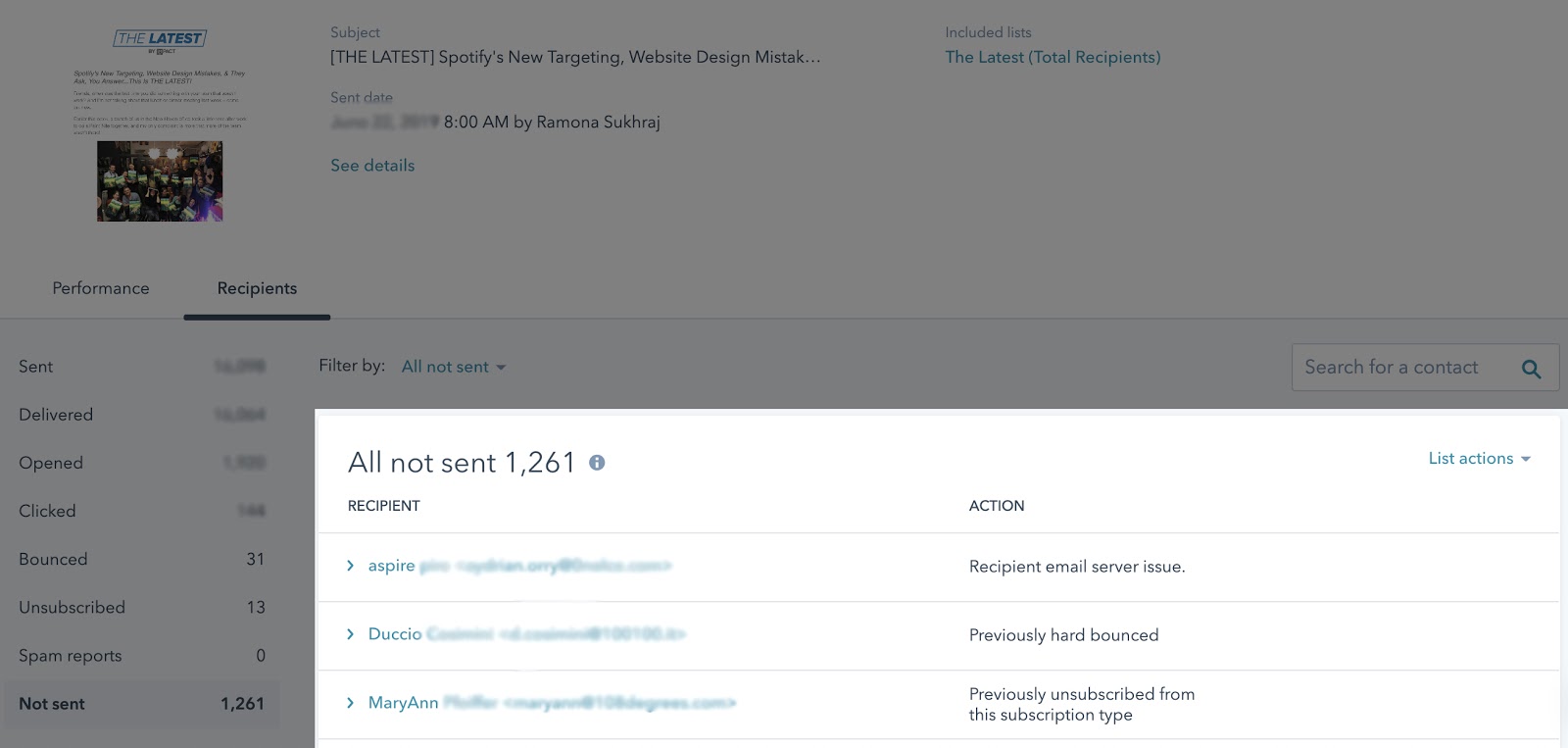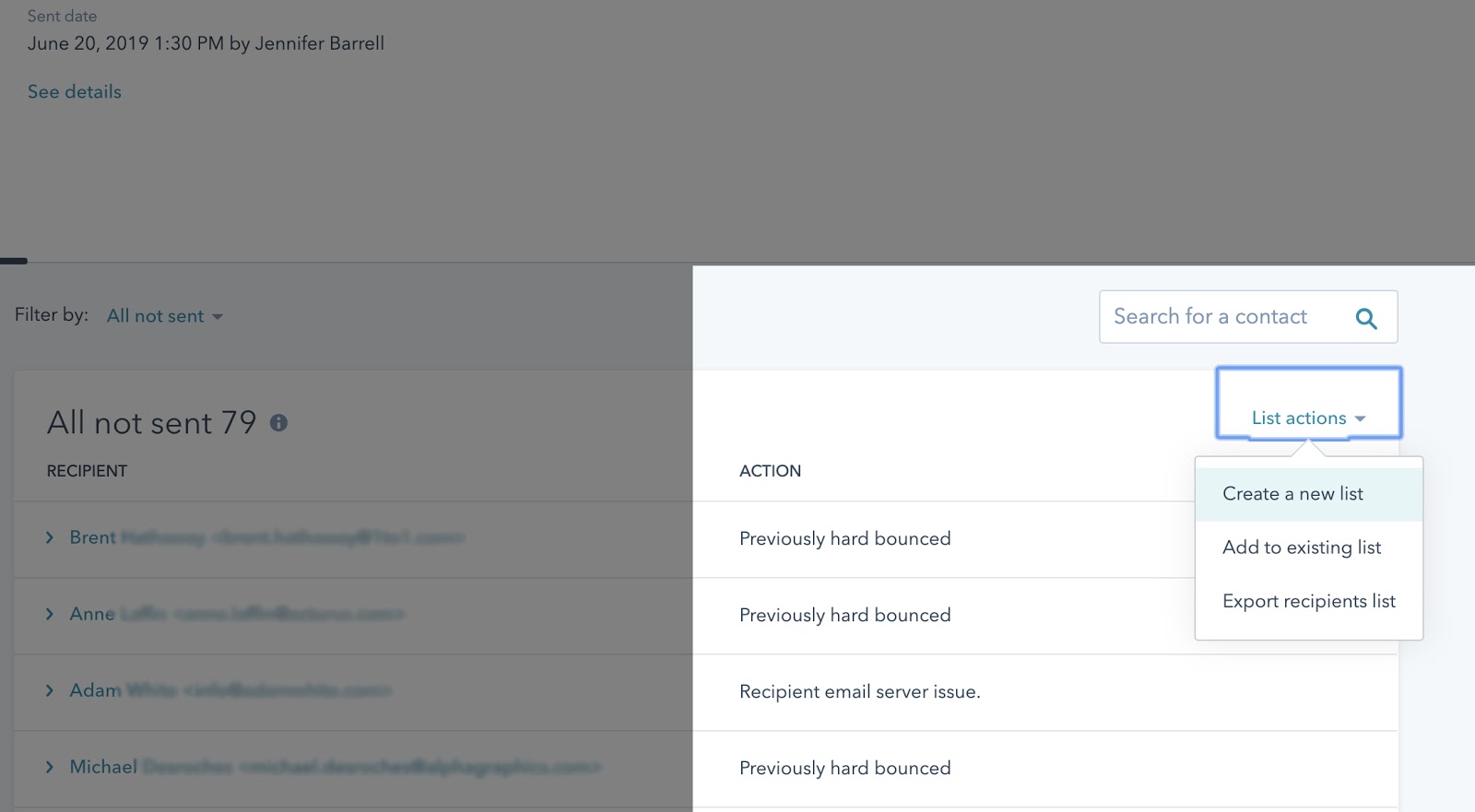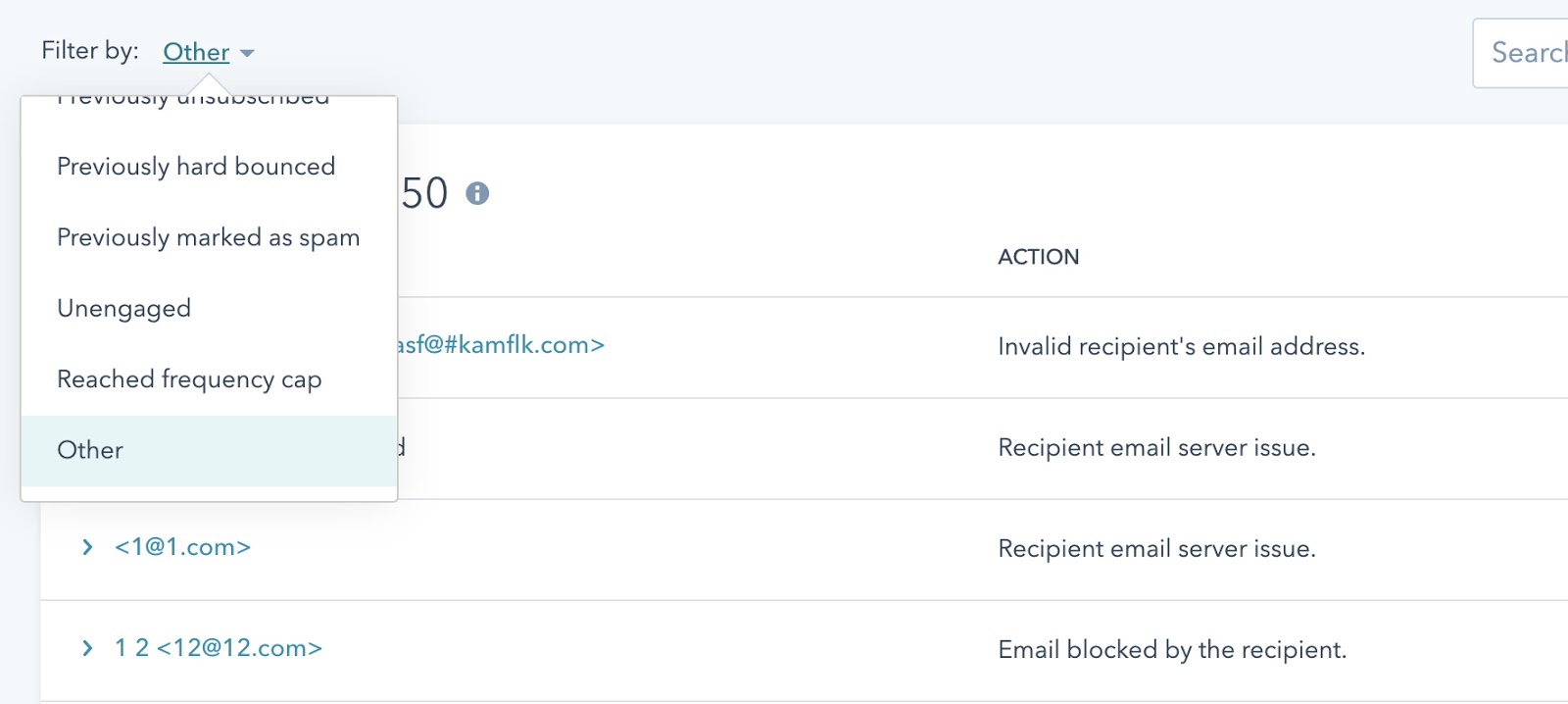Join 40,000+ sales and marketing pros who receive our weekly newsletter.
Get the most relevant, actionable digital sales and marketing insights you need to make smarter decisions faster... all in under five minutes.
List Hygiene & Email Deliverability: Getting Into Inboxes & In Front of Subscribers [Interview]

By John Becker
Jul 2, 2019
![List Hygiene & Email Deliverability: Getting Into Inboxes & In Front of Subscribers [Interview]](https://www.impactplus.com/hs-fs/hubfs/list-hygiene-email-deliverability.jpg?length=1200&name=list-hygiene-email-deliverability.jpg)
Chances are you didn’t buy your email marketing contact lists from a guy in a trenchcoat in a dark alley. However, even the most carefully-built and well-curated contact lists need to be kept clean.
Boasting an enviable number of people in your database is great, but not if a large percentage have invalid email addresses.
If your emails are not getting delivered (that is, bouncing), your list might need cleaning. It’s important to know that high bounce rates can also affect your ability to reach the inboxes of contacts who are highly engaged and interested in your content.
If you have high email bounce rates and don’t know exactly how to go about cleaning up your database — or are worried about deleting potentially valuable contacts, you’re not alone.
I sat down with IMPACT’s resident email deliverability master Stephanie Baiocchi – who works as our director of audience engagement and community – to learn about the best tools and best practices for email contact list hygiene.
John Becker: When we approached you about doing an interview, the idea of list hygiene and deliverability of emails came up — and it came up from you. Talk to me about why this is important and why you have this topic on your mind.
Stephanie Baiocchi: This topic has been important to me for much of my career because some companies, and I've seen many of them when I worked on the client side earlier in my career, just buy email lists. And they'd dump them through some filter first and then start emailing.
When you continue to do that, when you send to a poor list of emails, when you consistently email people who've bounced, when you email people who've unsubscribed, it negatively affects your sender score and your reputation as an email sender, and it affects your ability to land in the inboxes of people who do want to receive your content.
Even people who've opted in, people who read your content every day, they'll stop getting your emails in their inbox if you can't keep your deliverability rate in check.
JB: It kind of feels like you're sacrificing other metrics for the sake of one metric — the size of your list.
SB: Yes. And that's just it: What good is it to say we have a subscriber base of 100,000 contacts if only 20,000 actually open the emails consistently? You're also damaging your ability to continue to send emails. So, if nothing else, for that reason it's bad.
Also, if you're truly sending good email, you're A/B testing things, you're testing subject lines, you're testing content. Bulk sending to bad lists means you're muddying up your metrics with people who were never going to open your email in the first place. You're not getting an accurate representation of the things you are testing if half your list is junk to begin with.
JB: But there are certainly companies who don't buy email lists and still have this issue of list hygiene and deliverability.
SB: Absolutely. Everyone is going to experience this. Even the most well-kept email list is going to experience natural attrition over time because people leave jobs, companies rebrand or merge, email domains are constantly changing and, frankly, we're humans. People make typos. It happens all the time and any error can mean that an email is going to bounce. And if you're not keeping an eye on all the details, you're damaging your ability to send email that gets seen by the people who’ve asked for it.
JB: So, it seems like it's not about yes or no. It's about how and it's about degree. How do you keep a contact list clean?
SB: You should be doing it all the time. A lot of our readers are HubSpot users. HubSpot charges you per thousand contacts in your contact database. So when you go into the next tier of a thousand contacts, you're going to start getting charged more per month. And once that actually hits, no matter how many contacts you delete from your contact database, you won't be able to actually take that number back down. HubSpot just calls that “room to grow.”
And if you're about to get HubSpot or you're a new user of HubSpot, you're going to want to clean up your list before you ever put it in there in the first place. That's just a best practice anyway, but also it's going to save you money.
Plus, if you bring a really poor quality list into HubSpot, they can actually quarantine it. If a list contributes to a high hard bounce rate or the contacts were added through what HubSpot calls “suspicious form activity,” they will be removed from all future email sends.
There are a few tools you can use. Some top ones are NeverBounce, ZeroBounce, Email Oversight, and Bounceless. And there’s another one called Email List Verify. Those are interesting ones. (Unbounce is NOT one of these tools, even though it sounds very similar. It's a great tool, but it's not for this.)
You can use these tools to do a couple of things: You can mass validate a list, which is helpful before you migrate your entire contact database into a new platform or just to give it a quick scan.
Beyond checking for typos, these tools have the ability to send a kind of undetectable ping to someone's inbox to see if an email is going to make it to an inbox destination.
Real-time validation is also available in some tools. This helps you validate contacts as they submit a form, which is a proactive approach to dealing with typos and intentionally invalid emails.
JB: Can you talk about cost?
SB: A lot of these tools start out free, but they don't stay free. It depends on how many contacts you're using and how frequently you’re using the service. It's typically in my experience around a couple of cents per email, which sounds easy until you get into a list of 500,000 contacts. It can be anywhere from five to 50 cents for typical bulk email validation.
JB: Do you recommend using more than one of these tools?
SB: You should compare and contrast the tools for what you need. You also want to check if these tools integrate with your systems.
I would say overall they kind of do the same thing, so it's going to depend on your specific needs and the size of your list.
No matter what tool you choose, you may need to make sure that it’s GDPR compliant. If you're trying to stay compliant with those standards, verify that any email validation tool you use is compliant because you are sharing personal information out to a third party.
JB: So, we’ve covered when to do this and HOW. How about WHO. Whose job is this?
SB: That's a great question. I would say whoever's mostly in charge of sending your emails, whoever's sending those marketing and nurturing emails, it's going to fall on them because it's going to affect them directly the most and they'll have the most insight into it.
For IMPACT, it's my job because I'm the Director of Audience Engagement and Community and that includes making sure that we're treating people's personal information with respect and we're protecting their privacy. And we're doing all this with our contact database as well. We're lucky because we have someone like me who's really dedicated to this. But for anyone else, the marketing team can take this on together.
Of course, there are also things you can do right within HubSpot. I wouldn't say this replaces an email validation tool at all, but one thing that you can do is look in your “not sent” section and “bounced” section of your sent emails in HubSpot.
There's a section in HubSpot when you send an email that shows who received the email and who didn’t. It also shows instances where HubSpot opted to not even attempt the send.
 The not sent section in HubSpot.
The not sent section in HubSpot.
Not sent is the most interesting because HubSpot looked at the email address and said, "Nope, not even going to try it. We're better than that," which I love.
There's a variety of reasons an email was not sent to someone in HubSpot. Sometimes it's a recipient email server issue, sometimes it's an invalid email address, sometimes it has previously hard-bounced, sometimes they'd previously unsubscribed.
There are also times where HubSpot flags an email that has bounced globally. This means this email address has hard bounced for a permanent reason across three or more HubSpot accounts. When an email bounces globally it’s dropped from future emails across all HubSpot portals.
HubSpot gives you that reason right within your email. So you don't even need a tool or to pay for an additional tool to scrub out these first.

Create a new list from not sent contacts.
Unfortunately, this information cannot be found in a contact property. You cannot build a list based on this. You cannot filter or build workflows based on this. What you can do, and this is something that a lot of people don't know, is you can go to the email itself, go to the not sent section, and you can filter by the reason.

Not sent emails sorted by reason in HubSpot.
So, you can filter previously marked as spam or previously hard-bounced, and then you can create a new list right from here in HubSpot, and when you create that new list, you can add these email addresses to an existing static list or create a new list.
I like to have an ongoing list throughout the whole quarter called “contacts to delete.” And then at the end of every quarter, I'll look. I'll make sure that they are not clients. I see who's in my contacts to delete list, who's not a client, and then I just delete them.
And this is something that people struggle with a lot. They're like, "They've subscribed to our content, they're leads, they got in here somewhere." You know what, they're not getting our emails. And if they want to, they can always re-subscribe. They can always come back. But right now we're not actually getting to them anyway.
I like to go in and take people who I know there's no chance we're getting in that inbox.
There are definitely little things you have to look out for, though. For instance, if you have a frequency cap set in your account, that shows up in the “not sent” section in HubSpot. HubSpot users can say, "We only want to send people a maximum of five emails a week. No matter what they're subscribed to, once you hit five just don't send them the rest. It's too much.” If they hit that frequency cap, they're going to fall into this not sent bucket. That is no reason to delete a contact. So, you can't just take everyone in the not sent bucket and delete them.
So, it does take some looking around, but that is why the person who's sending your emails or is dealing with email in the back end is going to be a great person to do this because they have the insight into "We sent an email to 10,000 people, 35 weren't sent. Great," or "We sent an email to 10,000 people and 6,000 emails weren't sent. We have an issue."
JB: Beyond invalid email addresses, should databases also be purged of people who have unsubscribed or just don’t open emails?
SB: Before you just mass delete contacts, run a re-engagement campaign. That's where you're going to hit those people who maybe haven't opened your emails in a really long time. That's the kind of things you've seen where the email subject line might say like, “Action required,” or, "we're closing your account," or, "haven't heard from you in a while. Where'd you go?" or, "we miss you." Those can work, and sometimes it is enough of a reminder to catch someone's eye. Personally, I've gotten emails like that and thought, "Actually, yeah, I do want to read this. I just haven't opened one in a while.”
You can try to re-engage them with a campaign before you go and just delete them. Just don’t include anyone who has unsubscribed or hard-bounced. They're not going to get it anyway, so you want to separate that out.
For the subscribed but unengaged people, there are a couple of options. We use a tool that I love called Seventh Sense because it buckets people into categories of engagement, which helps me run my re-engagement campaigns.
The highly engaged people are good to go. The super unengaged people, probably not worth it. But those people in the middle can really benefit from a re-engagement campaign.
There’s something else that a lot of platforms offer called a “graymail.” This will give you the option to automatically filter out people who have not been opening your emails lately. Use this if you want a better open rate and you want to only send to engaged people. If people in your list haven't opened your emails for a while, you might just want to skip them this time and you can do that. It’s a simple check-box in HubSpot.
It's a good thing to keep an eye on and to use, but it's definitely not something you want to rely on blindly.
JB: Do you have any last piece of advice to give people who are in this position or are overwhelmed by this task?
SB: Join IMPACT Elite! You're not suffering alone. We have discussions like this all the time, which actually triggered this exact conversation. Somebody even said, "I don't have an opinion on this, but thank you for posting this because I debate this in my head on a weekly basis."
So this is something that everyone's probably dealing with. And I know that if you've suffered by hearing things like “We're not deleting leads,” you can get through that conversation and everyone will be better for it.
Free Assessment: